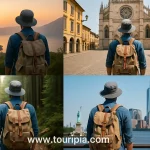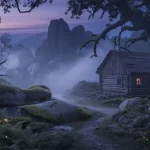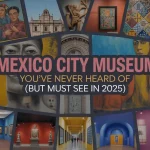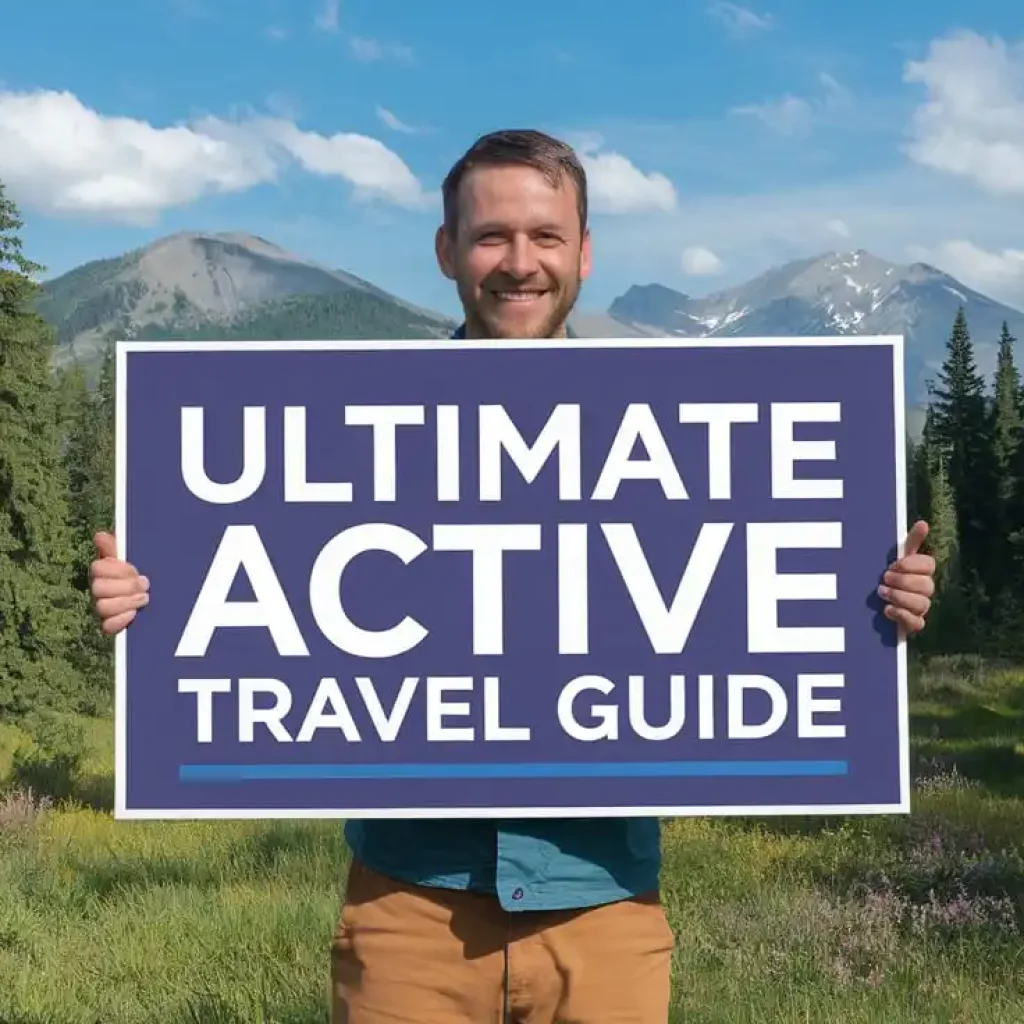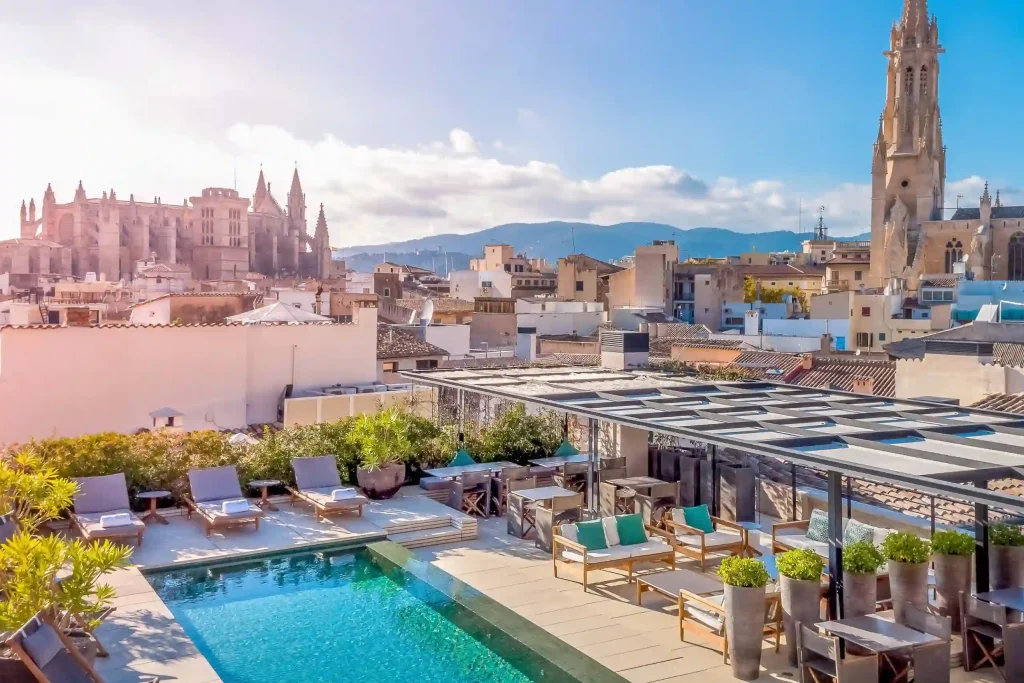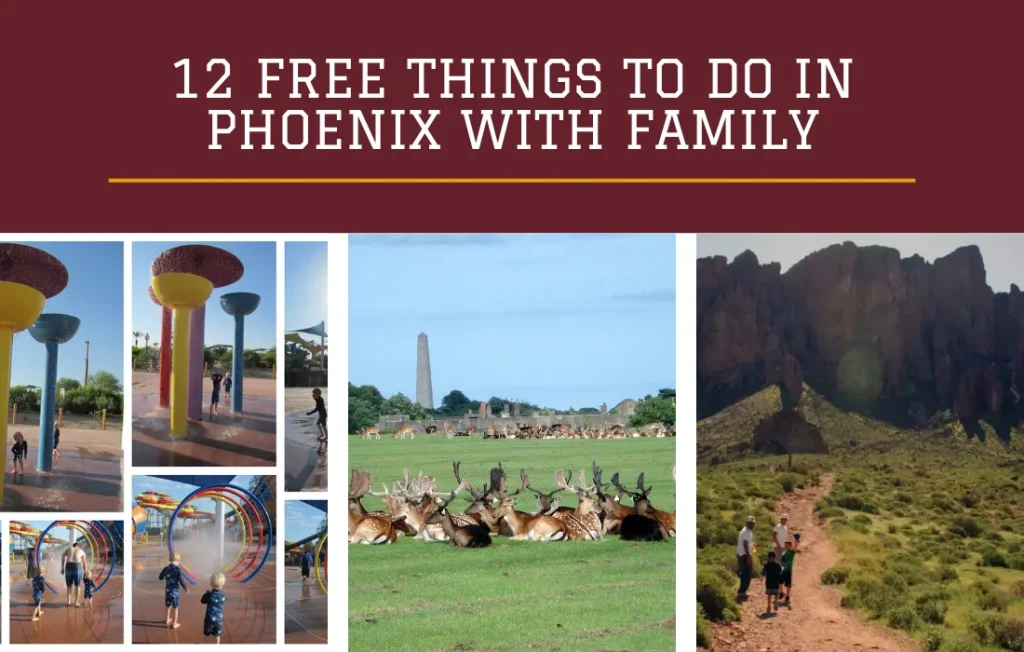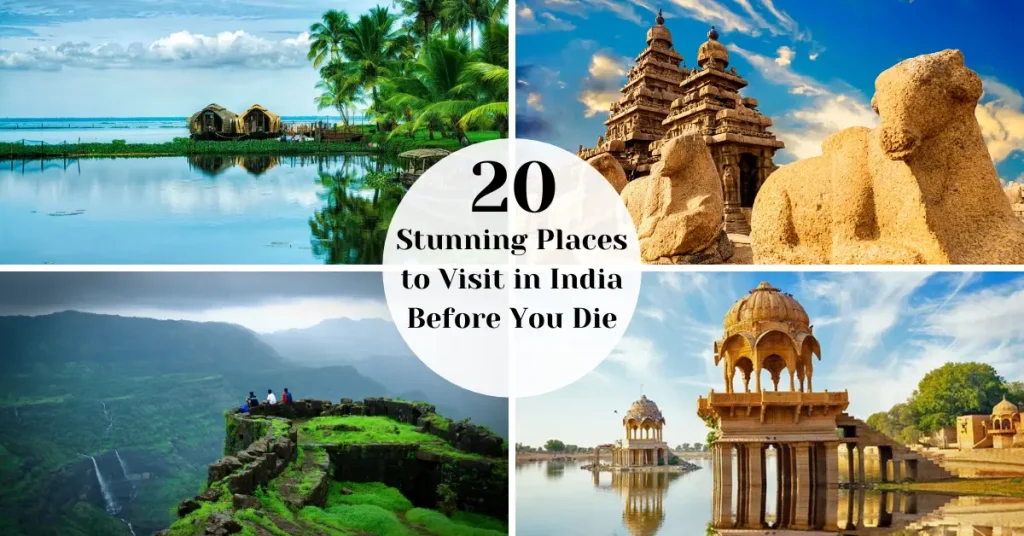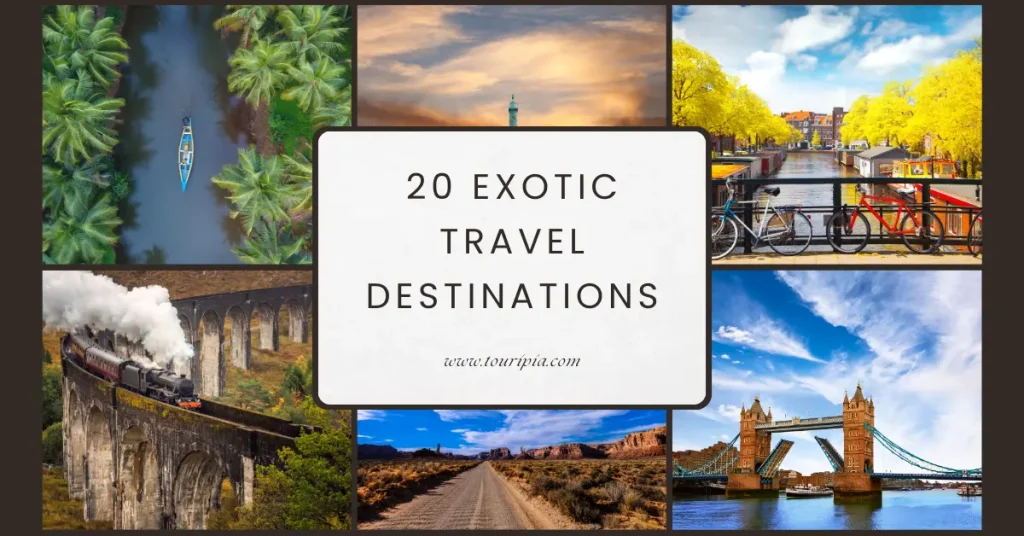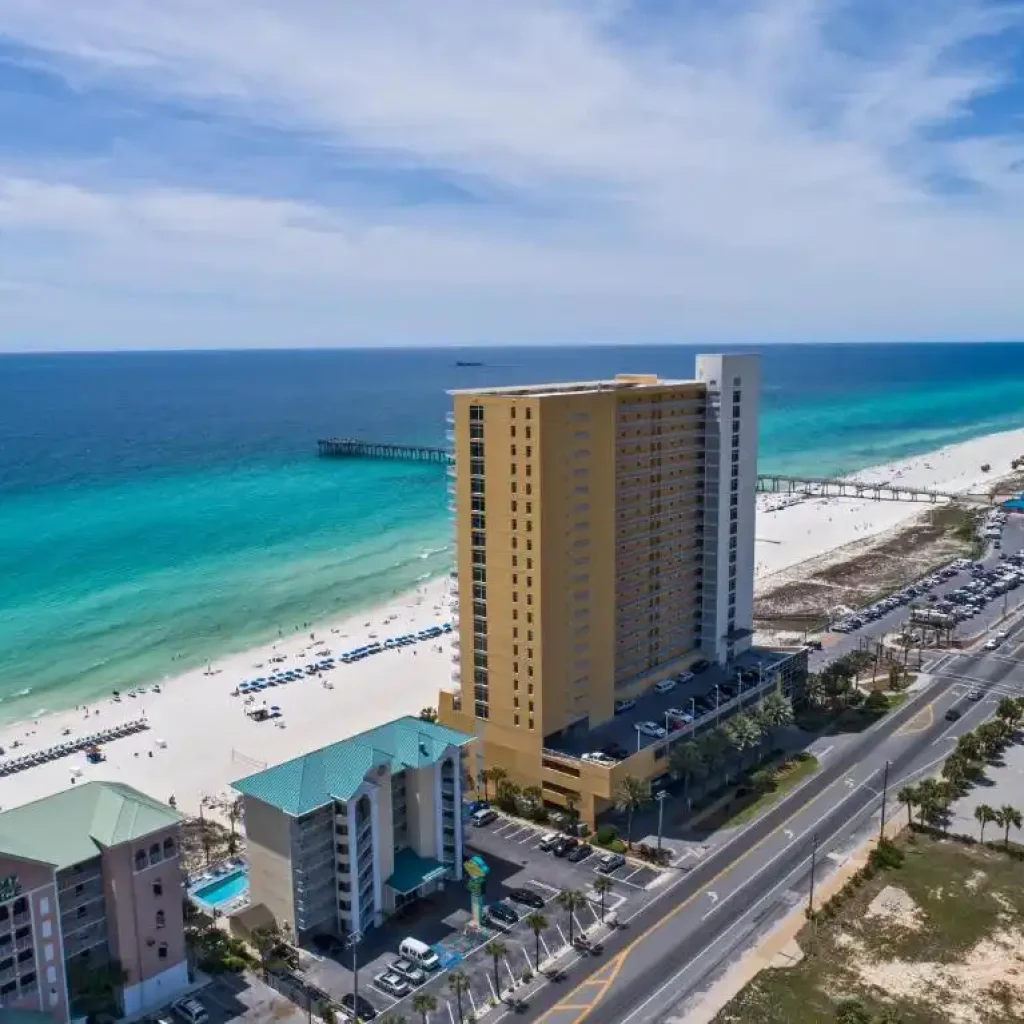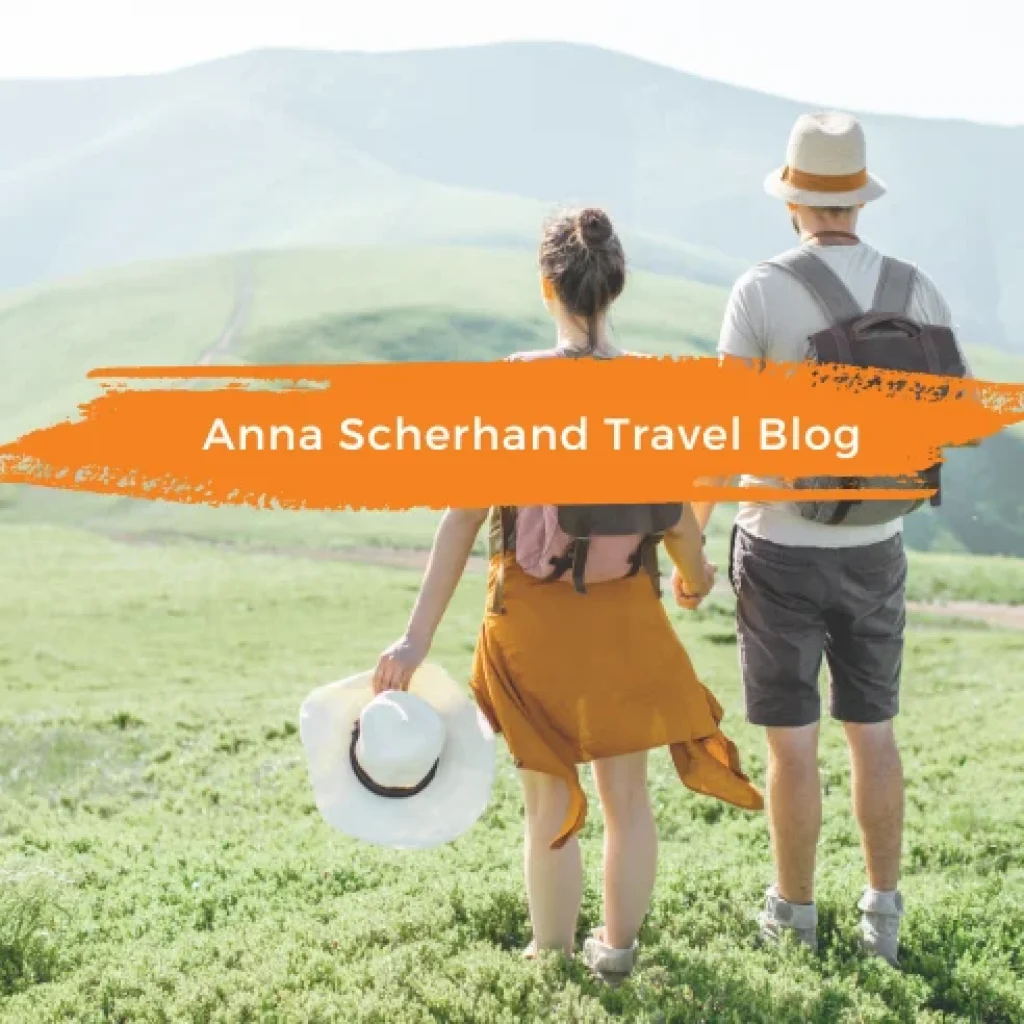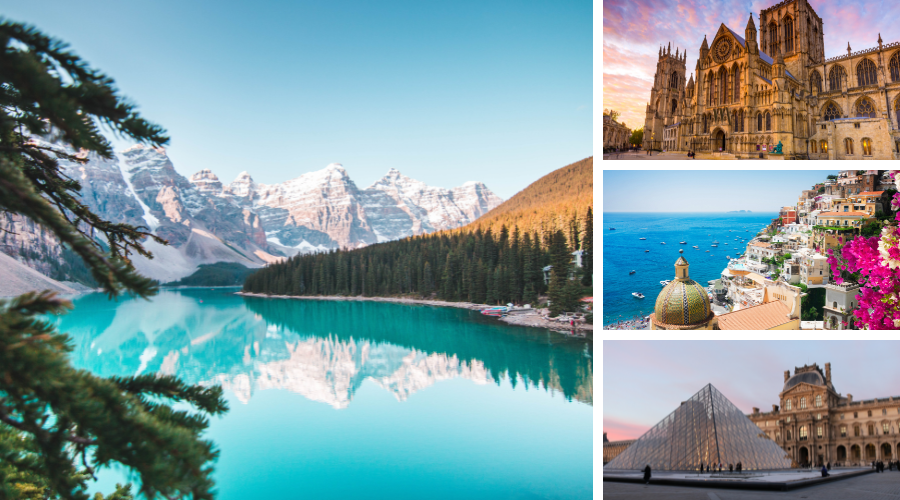12 Unbelievable Hidden Gems in Oceania Islands You Won’t Believe Exist!
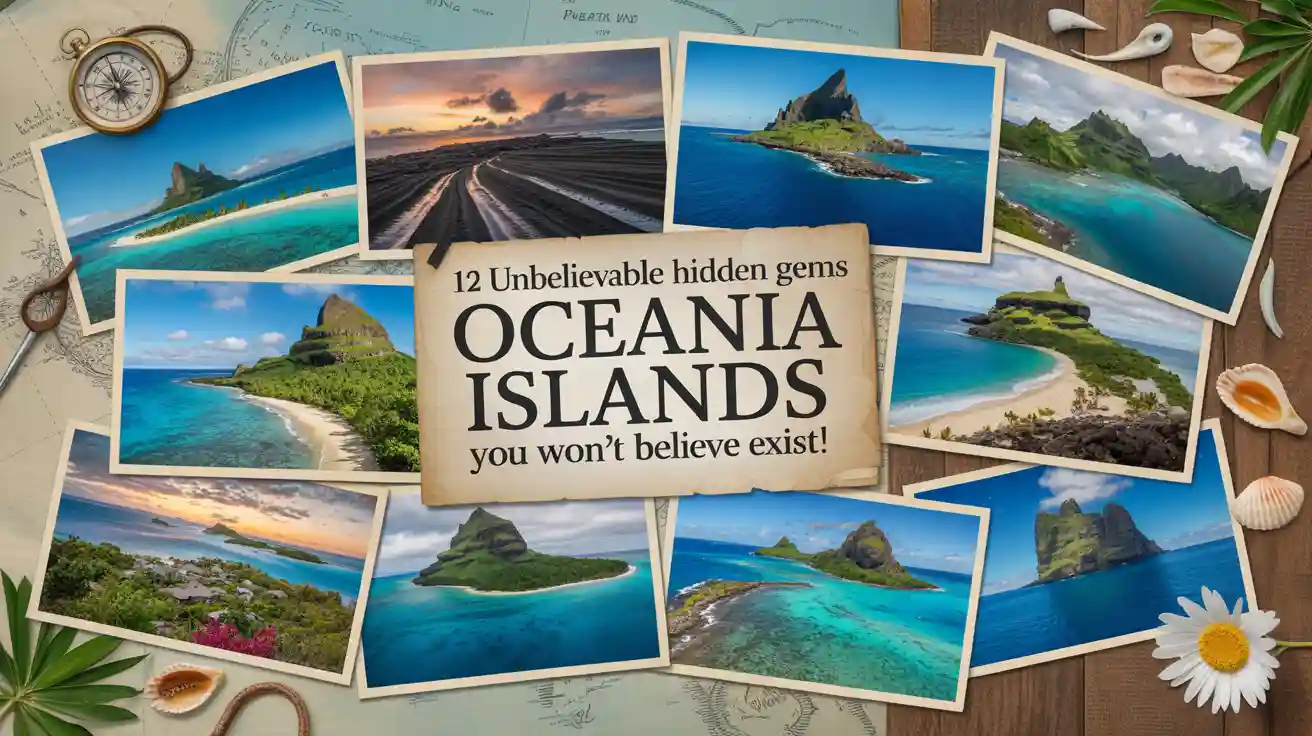
Think you’ve seen it all in the South Pacific? White sands, overwater bungalows, maybe a scuba trip in the Great Barrier Reef? Yeah… that’s what most people imagine. But the truth is, there’s a version of Oceania you’ve probably never heard about.
One that skips the glossy brochures and dives straight into volcano-rimmed islands, hidden lagoons, and local legends whispered between palm fronds.
There are places in the South Pacific Islands countries that don’t make it onto mainstream travel lists. No shiny airport lounges.
No infinity pools. Just raw, stunning beauty — and a kind of quiet that stays with you. You won’t find these hidden gems in Oceania islands travel guides that focus only on Fiji or Tahiti. But you will find them here. Maybe not on the Best travel guide websites… but definitely worth bookmarking.
This isn’t about knocking the usual spots. Bora Bora is gorgeous. So is New Zealand’s Fiordland National Park — no denying it. But if you’ve ever craved something that felt truly untouched… or wondered if places still exist where you can hear your own breath underwater… you’re in the right place.
Nan Madol looks like it shouldn’t exist — sort of like Coober Pedy, where entire towns sit below ground. Only here, the stone city floats on water.
Over the next few sections, we’ll wander through 12 unbelievable hidden gems in Oceania islands you honestly might not believe exist.
From ancient floating cities in Micronesia FSM to glowing caves in Vanuatu, this is more than a checklist — it’s a love letter to the unnoticed, the unsung, the unreal.
Exploring Hidden Gems in Oceania Islands – Travel Book
Whether you’re a cultural immersion traveler, a backpacker with a Lonely Planet tucked under your arm, or just someone chasing a story that hasn’t been told a hundred times… this Hidden Gems in Oceania Islands travel guide 2025 is for you.
And who knows? By the end, you might just start sketching out your own South Pacific Islands map, plotting routes that most people wouldn’t even think to Google.
Ready?
🧭 What Defines a Hidden Gem in Oceania?
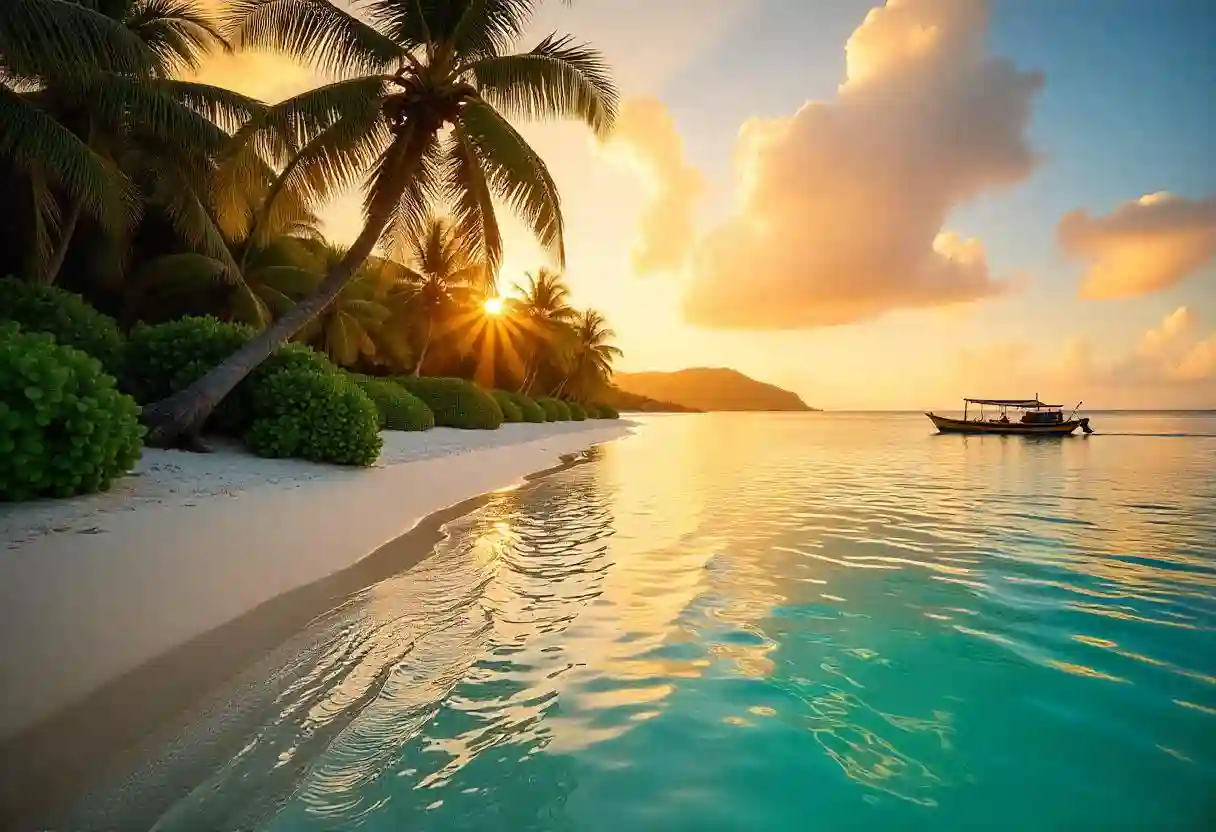
So… what even is a hidden gem when you’re talking about the Pacific Islands? It’s a phrase that gets tossed around a lot. But in this part of the world — where remote actually means remote, and time slows down in the best way — hidden gems Islands aren’t just lesser-known spots.
They’re entire experiences you’d probably miss unless someone tipped you off over a beer at a beachside café.
Criteria for Selection
We didn’t just pull these places out of a hat. There’s a bit of method behind the magic:
- Untouched natural beauty
Think volcanic landscapes, coral reefs that haven’t been trampled, forests where birds still outnumber people. Some are even close to better-known areas — like the edge of Fiordland National Park or near the Cook Islands — but feel miles away from it all. - Cultural authenticity and uniqueness
Not the kind of “cultural experience” that gets rolled out for cruise ships. We’re talking about real life — places where Fa’a Samoa or Polynesian culture still quietly pulses through daily rituals, where traditional tattooing or tapa cloth-making isn’t a demo… it’s just Tuesday. - Limited crowds or tourist development
If your idea of paradise includes a Starbucks, these might not be for you. Many of these spots don’t have hotels — just homestays or family-run eco-lodges. You might need a local boatman to even reach them.
And yeah, some of them won’t be on the Best South Pacific islands to visit lists. That’s kind of the point.
Why These Places Are Worth Discovering
Honestly, it’s not just about bragging rights (though showing off photos from the Rock Islands or Niue Island does feel pretty good). Visiting these places has ripple effects:
- Support local economies
By staying in village-run lodges or buying crafts directly from artisans, your trip becomes a two-way street. You get the experience, they get the support. - Escape mass tourism
There’s something healing about being somewhere that doesn’t have tour buses or selfie sticks. Just you, the ocean, and maybe a few curious Hector’s Dolphins. - Deeper connection with nature and culture
Whether you’re canyoning through lava tubes in Vanuatu or joining the Land Divers of Pentecost (just to watch — let’s not get carried away), these kinds of experiences just hit different.
Pro Tip: If you’re using Travel Guide books like Lonely Planet or Horizon Guides, take them with a pinch of salt in this region. They might not always include these spots… or they bury them in footnotes. Online forums and local blogs can sometimes be more up to date — especially for places affected by cyclone season or shifting transport access.
Also, keep a screenshot of the South Pacific Islands map. You’ll need it when you start wondering, “Wait, where even is Ambrym?”
🌺 12 Unbelievable Hidden Gems in Oceania Islands You Won’t Believe Exist
🏝️ 1. Ambrym Island, Vanuatu
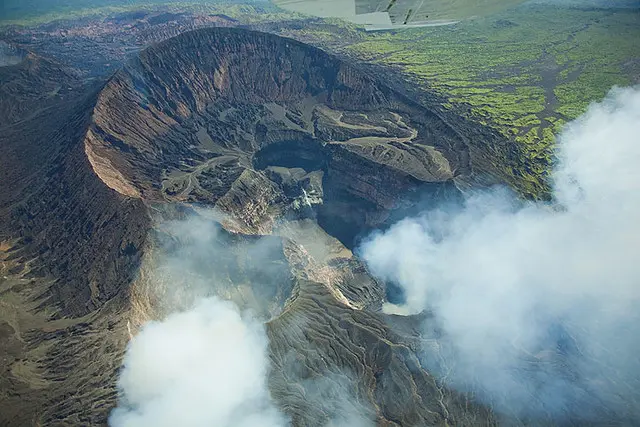
Some places just feel like they belong in a different dimension. Ambrym Island is one of them.
Tucked away in the archipelago of Vanuatu, Ambrym isn’t the sort of place you stumble across. There are no big hotels, no cocktail bars. What it does have? Two active volcanoes, lava lakes that glow like something out of a sci-fi novel, and a cultural legacy that’s as powerful as its molten core.
Getting there isn’t straightforward. You’ll need to fly to Port Vila (Efate Island), then take a domestic flight or a boat — depending on the season and, honestly, a bit of luck. Local advice goes a long way here. Check cyclone season calendars and try to connect with guesthouses before arrival. There’s no room for spontaneity when the weather decides otherwise.
But once you land… it’s unreal.
You’ll likely hear the island before you fully see it. The low rumble of Mount Benbow and Mount Marum is like the Earth whispering secrets. Trekking up to the crater rims is possible — and safe-ish — with a local guide. It’s not easy though. The hike is tough, gritty, and at times disorienting. But standing at the edge of a lava lake, the heat rising, the sky turning that surreal red-orange-purple blend? It stays with you.
And then there’s the culture. Ambrym is often referred to as the “black magic island,” and while that might sound like a tourism hook, it actually reflects deep spiritual beliefs and traditions. You might get to witness a Rom dance — those haunting ceremonial performances with intricate masks, pounding drums, and a hypnotic rhythm. They’re not staged for tourists. They’re part of life here.
Top things to do on Ambrym:
- Volcano trekking (with a guide)
- Watch or learn about Rom ceremonies
- Explore traditional villages
- Visit ash plains and forested trails
Pro Tip: Bring a satellite phone or a backup GPS device. Cell service is patchy at best. Also, don’t forget to ask your hosts about the local legends — some travelers say they’ve heard stories of flying spirits and shape-shifting ancestors. Whether you believe them or not… well, that’s up to you.
Best time to visit? May to October — it’s the dry season and your best bet for clear volcano hikes.
This isn’t the Best Pacific islands to visit if you’re after convenience. But for raw, unforgettable wonder? It’s up there with the most powerful travel experiences in the South Pacific.
🏞️ 2. Lake Lanoto’o, Samoa
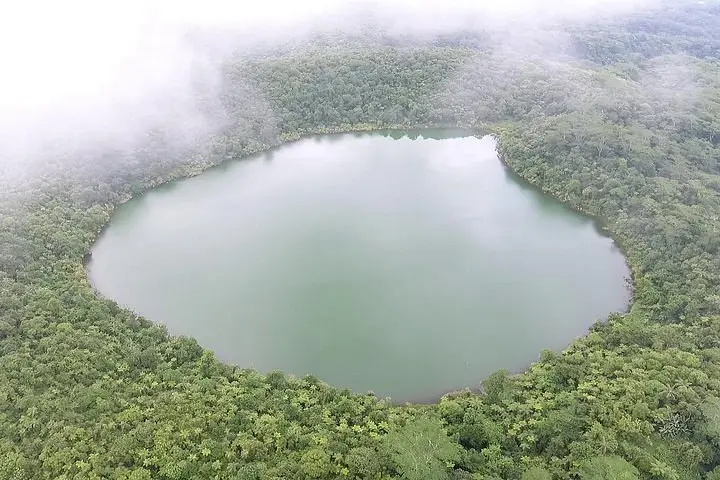
It’s strange how something so close to Apia — Samoa’s capital — can feel so wildly untouched. Lake Lanoto’o doesn’t try to dazzle you. It just exists… quietly, patiently, like it knows most travelers will never find it.
Set deep within the lush highlands of Upolu Island, this crater lake is part of the Lake Lanoto’o National Park, but you won’t find buses unloading tourists here. There aren’t even signs that make the trail obvious.
To reach it, you’ll need a 4WD (especially during the wet season) and, preferably, a local who knows which turn is not washed out from the last tropical rain.
The lake itself is dark and still — almost mirror-like — with golden koi swimming just below the surface. No, really. Someone introduced them years ago, and they’ve thrived, giving the lake an oddly magical touch. It’s quiet here, in that kind of way that makes you whisper without realizing it.
Birdsong echoes through the trees, and if you sit long enough, you start to forget where you came from.
This is one of those places where you don’t do a checklist of things. You just be. But if you’re looking to connect the dots, here’s what you can enjoy:
- Birdwatching (keep an eye out for the elusive Samoan whistler)
- Rainforest trekking
- Photography, especially in the misty early morning
- Quiet contemplation — no really, it’s that kind of place
Best time to visit:
May to October is ideal. That’s Samoa’s dry season and the safest window to drive up without needing to be pulled out by a tractor.
Pro Tip: Download an offline version of the South Pacific Islands map before you go. Cell service is flaky, and even Google Maps tends to get confused around here. Also, wear proper hiking shoes. The trail can be muddy, slippery, and occasionally feels like it just… disappears.
Oh, and if you’re the type who likes tracking your travels in Travel Guide books or making notes in your Lonely Planet, this might be a place to just… close the guide for a minute. Let it surprise you. Sometimes the best Pacific islands to visit are the ones that don’t come with a bullet-pointed itinerary.
🏖️ 3. Tanna Island’s Blue Cave, Vanuatu
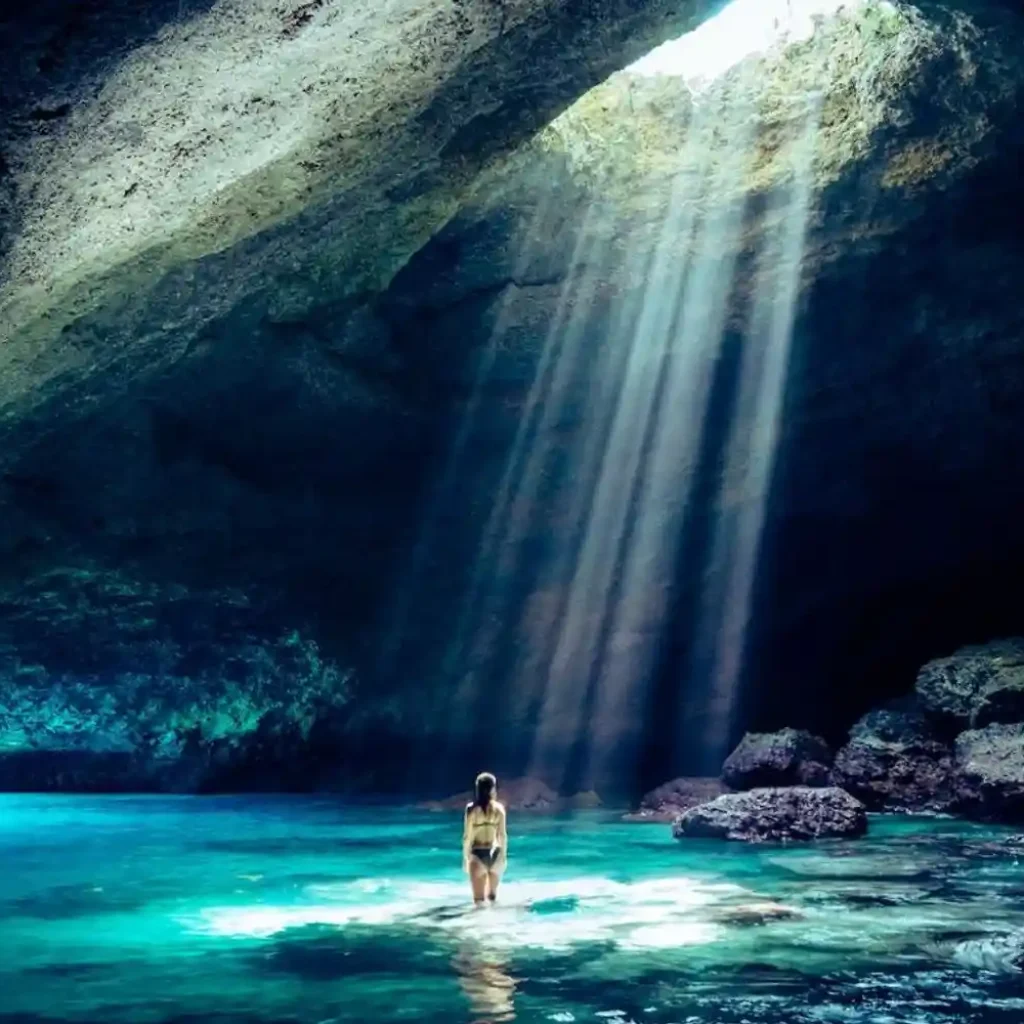
Some places are quiet in a way that feels sacred. The Blue Cave on Tanna Island is like that. You don’t just arrive — you slip in, literally, through a submerged tunnel that only reveals itself at low tide. And once you’re inside… it’s silent, echoing, glowing. Like the sea built a cathedral.
Tanna Island itself is part of Vanuatu, southwest of Efate Island. Most people come here to see Mt. Yasur, the island’s active volcano that spits fire almost nightly. And yes, it’s spectacular. But if you’re already on Tanna and don’t venture to the western coast to find this sea cave, honestly… you’re missing something even more surreal.
Getting to the Blue Cave means hiring a boat or going with a local guide from the nearby village. You’ll need to time it carefully — the cave entrance is submerged when the tide is up. You dive under for just a moment (some say it feels longer when you’re nervous), then resurface into this cavern where sunlight filters through a hole in the ceiling, lighting the water an unreal electric blue. It’s quiet enough to hear your own breath.
Top things to do around the Blue Cave:
- Snorkeling near the reef before or after your visit
- Visiting Mt. Yasur at sunset for a truly dramatic show
- Exploring local villages and learning about the kastom (customary) way of life
- Sipping kava in the evening with your hosts
Best time to visit:
May through October — again, the dry season. The water is clearest, and tides are easier to track.
Pro Tip: Bring fins and a waterproof flashlight. Sometimes the light inside dims depending on the clouds. Also, tell your guide if you’re not a strong swimmer — they’ll know how to help. And if you’re sketching out your trip using travel guide books or a Pocket Guide, make a note: this isn’t always listed. Many travelers only find out about the Blue Cave through word of mouth.
It’s the kind of place that reminds you why island hopping still feels like an adventure, not just a string of airports. One moment you’re on a boat, staring at cliffs. The next, you’re in a glowing chamber that feels alive.
🐠 4. Mailbox Reef, Tuvalu
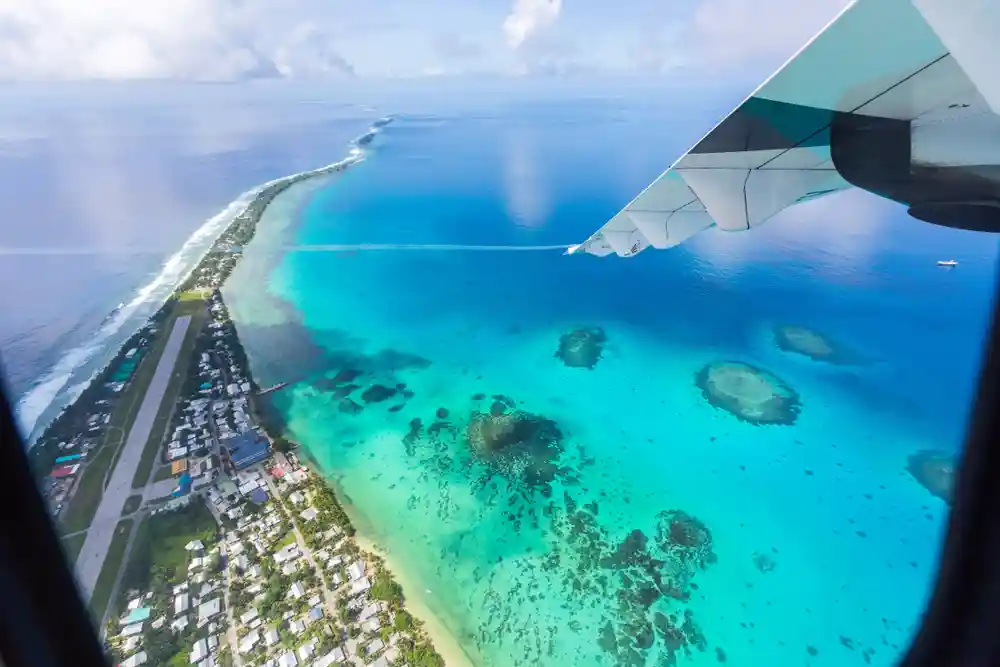
Tuvalu doesn’t show up on most travel radars. It’s one of the smallest and least-visited countries in the world, tucked between Fiji and Kiribati in the South Pacific. But that’s exactly what makes Mailbox Reef such a jaw-dropping surprise.
Picture this: you’re scuba diving in warm, gin-clear water surrounded by coral reefs that haven’t been scarred by over-tourism… and then, out of nowhere, you spot a mailbox. An actual, underwater mailbox. No signage, no crowds. Just a surreal monument to isolation — and a cheeky wink from the local dive community.
Mailbox Reef isn’t big. It’s more of a dive site than a “destination,” technically, but it earns its spot here because it’s the kind of place that almost feels like it shouldn’t exist. Tuvalu itself is often left out of the Best Pacific islands to visit lists, probably because it’s not flashy. No high-end resorts. No overwater bungalows. But what it does offer is peace… and authenticity in its rawest form.
Getting there? Not super convenient — and that’s part of the appeal. Most visitors fly into Funafuti (Tuvalu’s main island) from Fiji, and from there, you’ll need to organize a dive trip locally. There are no big dive shops here. Sometimes just a fisherman with gear and stories.
What to do around Mailbox Reef:
- Scuba diving or snorkeling along untouched coral reefs
- Visit local villages to experience Polynesian culture firsthand
- Try traditional foods like pulaka and coconut crab
- Watch locals perform fatele, a celebratory dance unique to Tuvalu
Best time to visit:
Dry season, between May and October. Keep in mind that the South Pacific islands, including Tuvalu, are sensitive to climate and cyclone season shifts — so it’s always smart to check with local tourism updates before booking.
Pro Tip: If you’re charting out stops with a South Pacific Islands map or planning your route using tools from the Best travel guide websites, Tuvalu might not even pop up unless you dig. That’s the sign you’re heading somewhere special. Also, bring cash. No ATMs on the outer islands, and card machines are rare even in Funafuti.
Oh, and the mailbox? You can actually post a waterproof letter from it. It might take a while to arrive… but that’s kind of perfect, isn’t it?
Explore more on How to Get to the Lofoten Islands: The Ultimate Travel Guide (2025)
5. Nan Madol, Micronesia (Federated States of Micronesia)
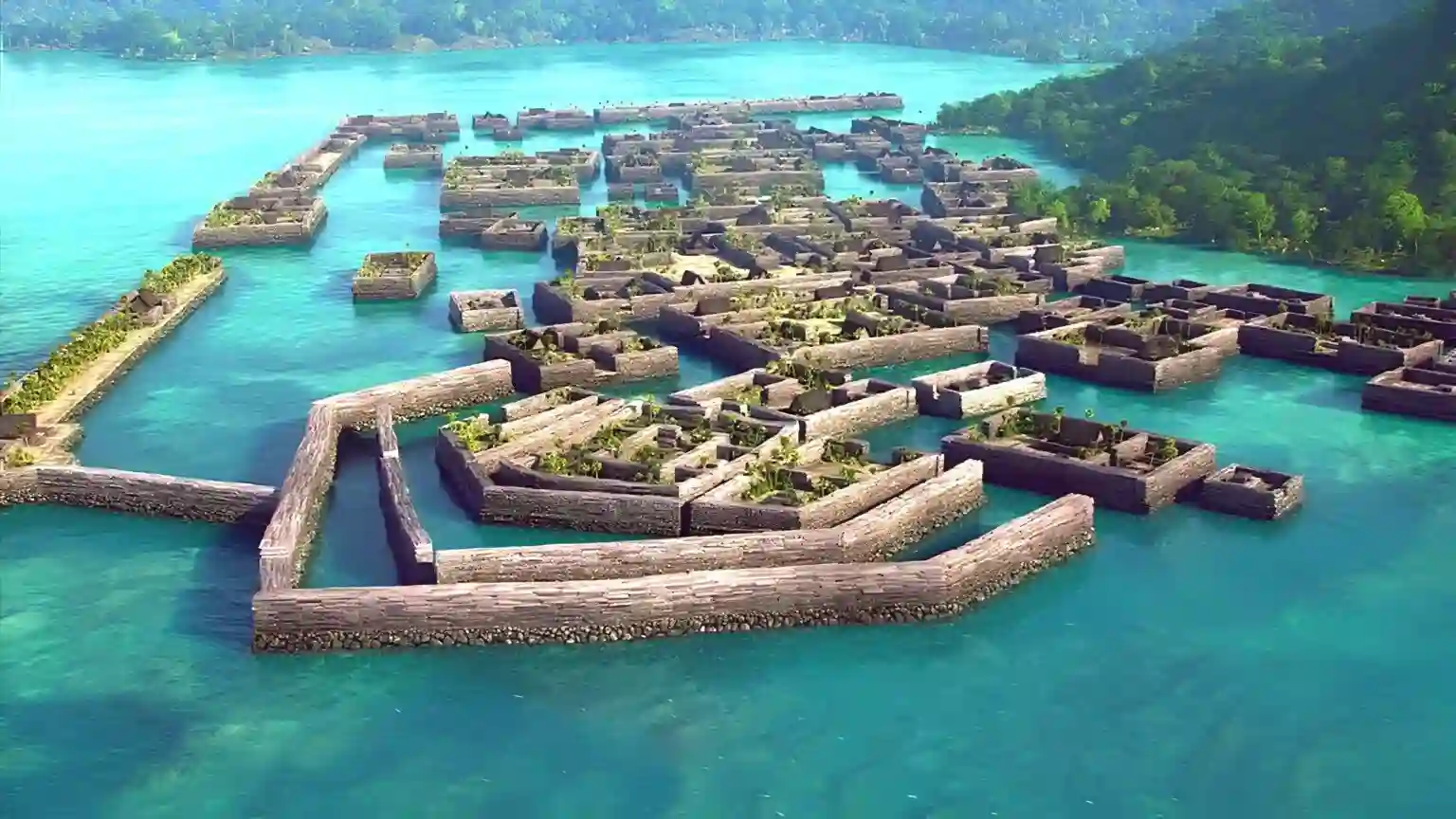
Let’s be honest — most people couldn’t point to Micronesia on a map if you asked them. And that’s kind of what makes Nan Madol even more mind-blowing. It’s an ancient stone city built on a lagoon. Not near the water. On it.
Located on the eastern shores of Pohnpei, one of the main islands in the Federated States of Micronesia (FSM), Nan Madol is often called the “Venice of the Pacific.” But that’s selling it short. Picture dozens of artificial islets connected by crumbling stone canals, temples made from massive basalt columns, and thick mangroves creeping in from the edges… it’s eerie, quiet, and absolutely breathtaking.
Historians still don’t agree on how or why Nan Madol was built. Some believe it was a political and religious center for the Saudeleur dynasty. Others speculate about lost technology or even… well, let’s just say the theories get pretty wild. The truth? We don’t really know. And that mystery makes standing among its ruins feel even more surreal.
How to get there:
- Fly into Pohnpei International Airport
- Hire a local driver or guide to reach the site (it’s tucked into the coast near Temwen Island)
- Expect to wade through water or ride a canoe to enter the ruins during high tide
Top things to do in Nan Madol:
- Explore the ancient ruins and canals
- Learn local myths from elders in surrounding villages
- Visit the nearby Kepirohi Waterfall for a cool dip
- Try island dishes made from breadfruit, coconut, and fresh reef fish
Best time to visit:
January through May is generally driest, though FSM doesn’t have a huge tourism calendar. It’s year-round, depending on your comfort with heat and rain. Just avoid peak cyclone season if you’re not a fan of unpredictability.
Pro Tip: Don’t expect crowds. Nan Madol sees fewer than a few thousand visitors a year. If you’re using Epic Guides or country maps to build your trip, you might have to piece things together yourself. This is where tools like Horizon Guides or the World Nomads forum can really help fill in the gaps.
Also… it’s quiet in a strange way. Bring water, good shoes, and an open mind. Locals say the site is still tapu (sacred). Some even believe spirits roam the area at night. Whether you believe that or not… well, that’s part of the adventure.
🌋 6. Savo Island, Solomon Islands
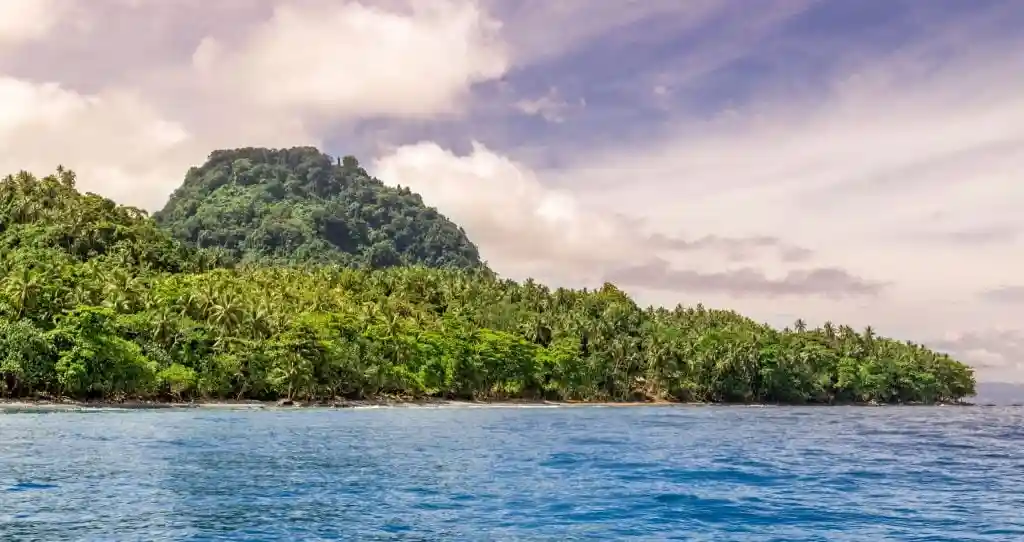
If you’ve ever wondered what it’s like to stand on an island that still bubbles from the inside, Savo might give you that answer. It’s small, volcanic, and easy to miss if you’re just skimming through a South Pacific Islands map. But once you’re there… it doesn’t feel small at all.
Savo Island lies just off the coast of Guadalcanal in the Solomon Islands. It’s home to steaming hot springs, active geothermal vents, and a dense jungle that hums with life. But the real surprise? People actually live here — peacefully — alongside a volcano that last erupted in the 1800s. And they’re the ones who’ll show you what makes this place unforgettable.
There are no major roads. No hotels. You’ll need a local boat from Honiara, the capital, and ideally a guide who knows the trails (and the tides). The hike to the hot springs isn’t marked, and the terrain is… let’s call it “adventurous.” But once you reach the steaming riverbeds and warm pools, it’s hard not to be amazed. This island isn’t dormant. It breathes.
Top things to do on Savo Island:
- Hike to natural hot springs (some hot enough to boil eggs)
- Hunt for megapode bird eggs on the beach (they lay in warm sand)
- Visit traditional villages and learn about local beliefs around the volcano
- Watch for dolphins and flying foxes along the coastline
Best time to visit:
June to September tends to be drier, making it easier to hike and explore. Boat rides are also smoother during this season.
Pro Tip: Don’t come here expecting classic tourist infrastructure. This is more cultural immersion than vacation escape. If you’re using travel guide books or browsing the Best travel guide websites, Savo might only show up as a footnote — or not at all. You’ll need to rely on locals and community-based tour operators for logistics.
Also, bring everything you need with you — especially water, snacks, and reef-safe sunscreen. There’s no shop to grab things last minute. Oh, and ask your guide about the island’s legends.
Some still speak of spirits in the steam… which may or may not explain the strange humming I heard just before sunset near the shore. No idea what it was, but I still think about it.
🏄 7. Uluveo Island, Vanuatu (Maskelyne Islands)
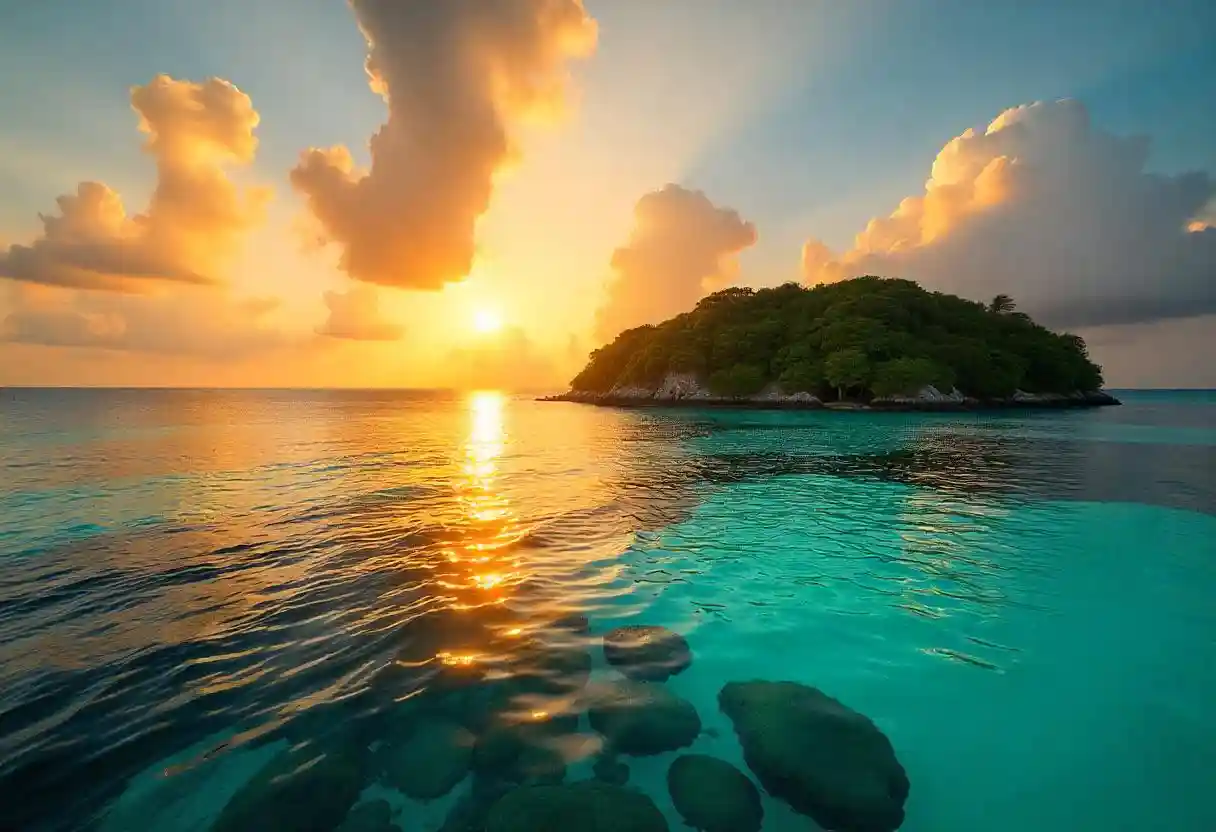
You might not find Uluveo Island in glossy brochures or mentioned in Lonely Planet’s “Top Picks,” but for some travelers, that’s exactly the draw. No hotels. No road traffic. No digital noise. Just reef, breeze, and the quiet pulse of island life.
Uluveo is part of the Maskelyne Islands — a tiny cluster off the southern coast of Malekula in Vanuatu. Getting here isn’t exactly easy, and that’s the point.
You’ll probably fly into Port Vila or Santo, hop a domestic flight to Lamap, then take a boat across to Uluveo. By the time you arrive, your phone’s signal will have dropped… and so will your urge to check it.
What makes Uluveo special isn’t just its coral reefs or warm lagoons. It’s the way people live here — rooted, slow, kind of timeless.
Locals are working to preserve both their environment and culture, which makes it one of the best Pacific islands to visit if you care about low-impact travel and authentic experiences.
Top things to do on Uluveo Island:
- Snorkel or dive in pristine coral reefs teeming with marine life
- Visit the sea turtle sanctuary run by local conservation groups
- Join a community tour and learn about traditional food prep or boat-making
- Explore mangrove forests and watch for flying foxes at dusk
Best time to visit:
May to October is your best window. The weather’s dry, the seas are calmer, and you’ll avoid the cyclone season that sometimes disrupts inter-island travel.
Pro Tip: Bring cash — and not just a little. There are no ATMs here, and card payments won’t be a thing. Most homestays or eco-lodges accept payment in person. Also, pack reef-safe sunscreen, language essentials (a few Bislama phrases go a long way), and your own snorkeling gear if possible — rental equipment isn’t guaranteed.
If you’re someone who travels with Pocket Guides or cross-references the Best travel guide websites, Uluveo might not rank high on suggested lists. But talk to divers or those who’ve stayed a few days here, and you’ll hear the same thing: it’s hard to leave.
And you know that overused phrase, “untouched paradise”? This might actually be it.
🦎 8. Rotuma, Fiji
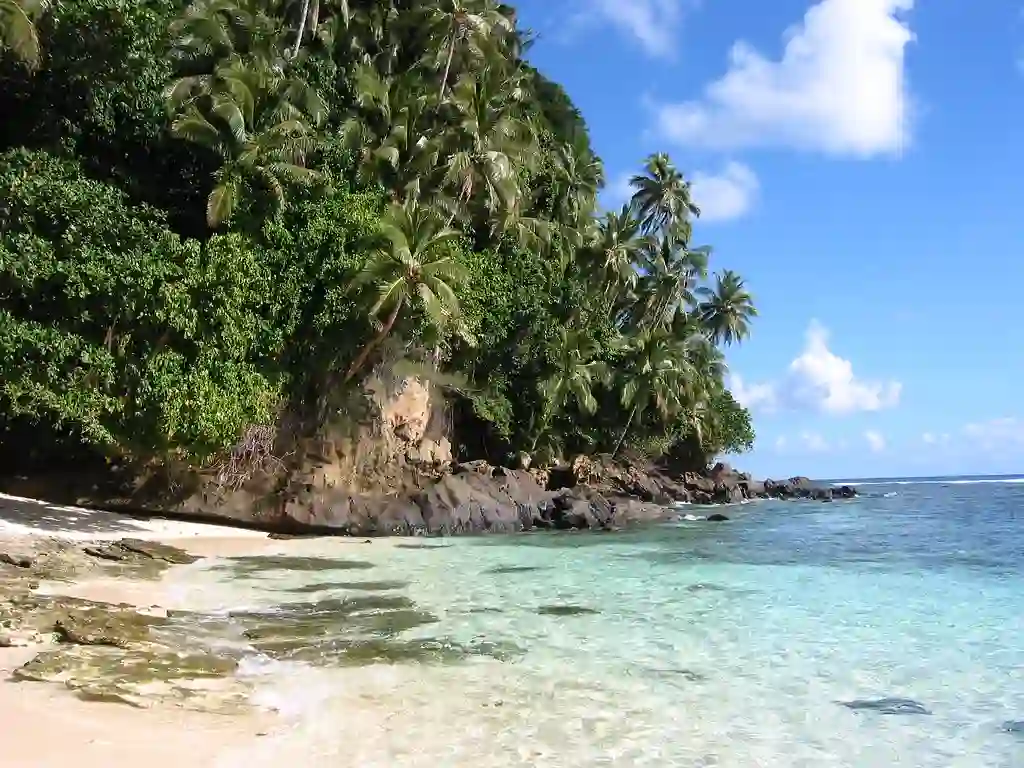
If you think you’ve “done” Fiji just because you’ve sipped cocktails on the Coral Coast or snorkeled in the Mamanuca Islands, well… you haven’t been to Rotuma. This isn’t your typical South Pacific escape. It’s something else. Something quieter. More private. Almost like a country within a country.
Rotuma sits over 400 miles north of Fiji’s main islands, isolated in both geography and spirit. Though it’s politically part of Fiji, culturally it’s distinct — more Polynesian than Melanesian. The local language, customs, and even architecture feel different, and most travelers never make it this far.
There are no major resorts, no gift shops, no fast food. Just a few guesthouses run by locals, dirt roads that lead to forgotten beaches, and a rhythm that feels entirely outside of time. Weekly flights from Suva or Nadi are your only consistent way in, and even then… weather or other delays can shuffle things around. Flexibility is key.
Top things to do in Rotuma:
- Swim at Motusa Beach, where the water is ridiculously clear
- Explore the lush inland trails dotted with taro and breadfruit trees
- Attend a local festival if your timing’s right (the singing alone is worth the trip)
- Learn about Polynesian culture that predates European contact
- Snorkel off coral heads where you’re unlikely to see another soul
Best time to visit:
May to September is best — fewer rains, more stable flights, and clearer skies. During cyclone season (typically November to April), trips can get unpredictable, especially with such remote infrastructure.
Pro Tip: Rotuma is a great place to disconnect — not in a cliché way, but in a real, “there’s no cell signal here” way. Bring physical travel guide books or download tools offline from the Best travel guide websites before leaving the mainland. Pack light, but include essentials like reef-safe sunscreen, insect repellent, and maybe even a few small gifts or food staples to share — imported goods are expensive and sparse.
And here’s something that caught me off guard: people here wave at you from every passing vehicle. Not just a polite nod — a full smile, hand out the window, “Hey, welcome” kind of wave. You start waving back. You slow down. You forget what day it is.
And maybe that’s exactly the point.
🛶 9. Marovo Lagoon, Solomon Islands
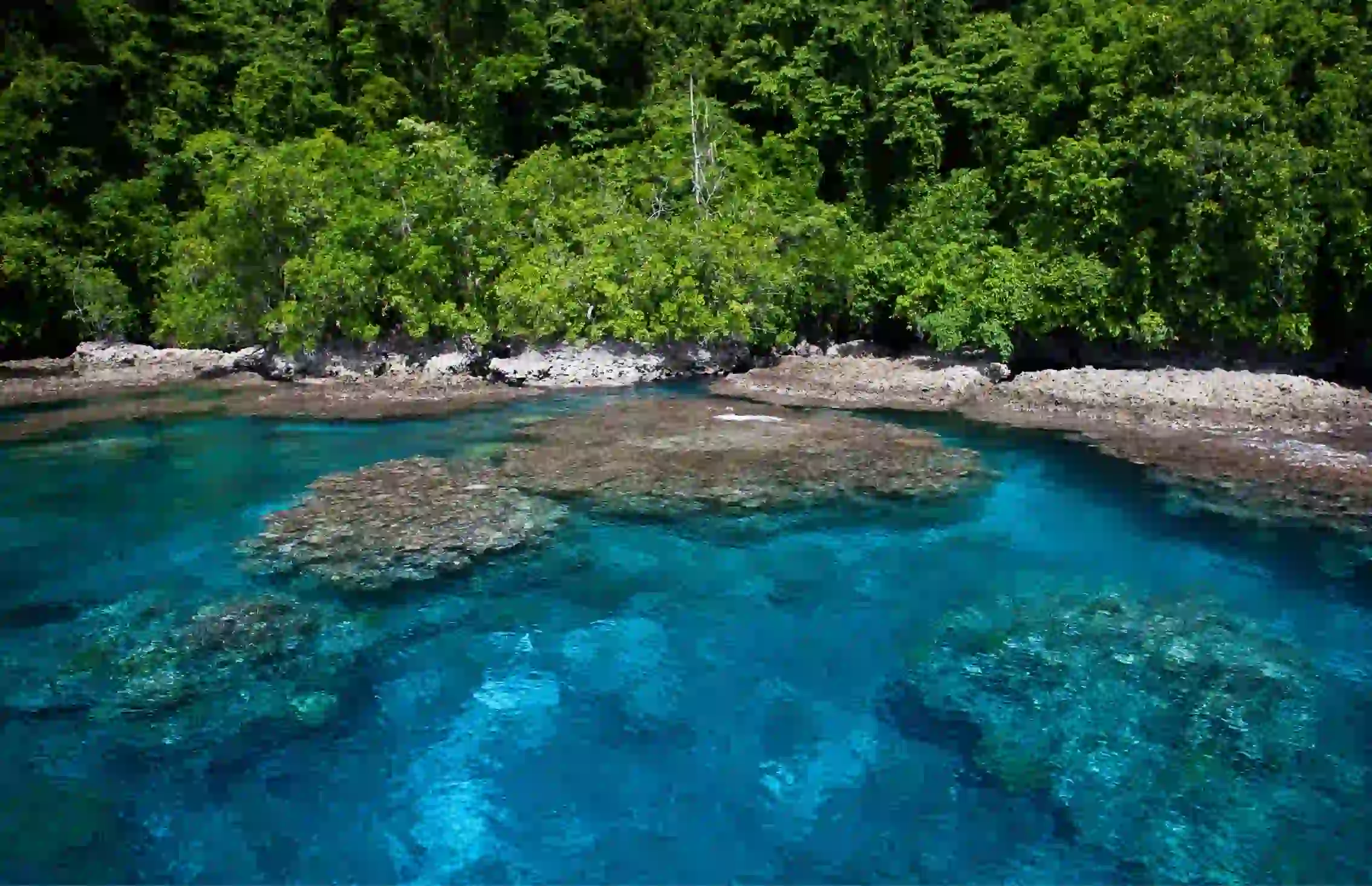
If you’ve ever wanted to paddle through a living postcard, Marovo Lagoon might just ruin every other destination for you. It’s the largest saltwater lagoon in the world — though you wouldn’t know it from the quiet, understated way it exists. No showboating. Just layers of blues and greens, mangrove tunnels that twist like jungle stories, and coral gardens that stretch further than you can swim.
Located on the north side of New Georgia Island in the Solomon Islands, Marovo is surrounded by dozens of small islets, many of them inhabited by local villagers who’ve lived here for generations.
There’s no major airport. Most travelers fly into Honiara, then take a smaller plane to Seghe… followed by a boat ride. From there, it’s all slow travel. Canoes, walking paths, and long exhale moments.
And if you’ve ever browsed travel guide books hoping for the kind of place that still feels like a secret, this is it.
Top things to do in Marovo Lagoon:
- Canoe through mangrove forests and into secluded coves
- Snorkel or dive among coral reefs barely touched by commercial tourism
- Stay in traditional overwater bungalows run by local families
- Watch reef fish light up under your deck at night
- Learn woodcarving from master artisans in the villages
Best time to visit:
April through October is generally drier and better for water clarity. Cyclone season can affect travel plans, especially for small boats and flights.
Pro Tip: Skip the search for five-star resorts — this isn’t that kind of destination. But what you will find are warm home-cooked meals, storytelling under the stars, and a type of peace that’s hard to explain. Pack everything you need (especially medical essentials and water filters), and bring cash in Solomon Island dollars. No card machines. No ATMs.
Also, don’t forget to ask your host for a night paddle. Drift in a canoe as bioluminescent plankton spark around your oar. It feels like you’re paddling through stars. Seriously.
If you’re stitching your journey together with country maps or using trip-building tools from the Best travel guide websites, this is one to mark with an asterisk. Because you might leave part of yourself behind here… and not mind at all.
🧜 10. Niue Island (The Rock of Polynesia)
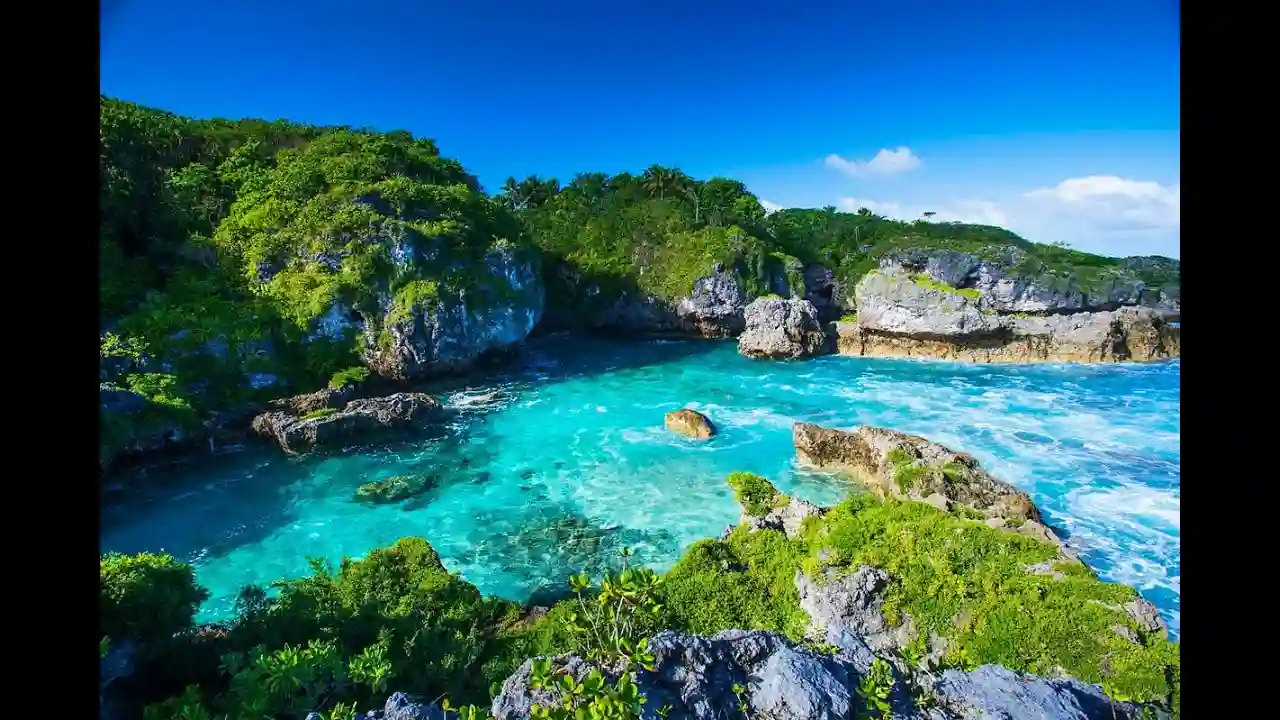
Niue is one of those places where you arrive… and then immediately wonder why no one talks about it more. Maybe because it’s tiny. Or remote. Or because it doesn’t fit neatly into those glossy “Best South Pacific islands to visit” lists. But if you’re after something wild, raw, and quietly spectacular, this is it.
Often nicknamed “The Rock of Polynesia,” Niue is technically a self-governing island nation in free association with New Zealand. It’s not easy to get to — just one weekly flight from Auckland (sometimes two in peak season). But that limited access is part of the charm. Fewer visitors means more space, more silence, more nature left to its own rhythm.
What makes Niue so unbelievable is how rugged and beautiful it is, all at once. Think sheer limestone cliffs. Coral caves that flood and empty with the tides. Chasms where you can swim in water so clear it barely seems real. And when the season’s right, you can stand on a cliff and spot humpback whales just… drifting by.
Top things to do on Niue:
- Snorkel in Avaiki Cave or Limu Pools
- Swim with spinner dolphins (they’re wild, and they come close)
- Go whale watching from shore between July and October
- Explore lava tubes and sea tracks that lead to hidden swimming spots
- Visit local markets and learn about the island’s cultural traditions
Best time to visit:
June to October is ideal — not just for weather, but for whale season. Imagine sipping coffee on your porch while humpbacks breach in the background. Yeah… that’s real.
Pro Tip: You’ll want to rent a car or scooter — Niue has no public transport. And don’t count on roaming data or strong signals. Most visitors download country maps in advance and rely on pocket guides or tips from their hosts. Also, Sundays are sacred. Almost everything shuts down, so plan ahead if you’re arriving over a weekend.
If you’re using the Best travel guide websites to research island hopping in the South Pacific, Niue might feel like a footnote. But if you’re building a trip with sustainability, quiet, and real connection in mind — this one hits different.
Oh, and one more thing… the stars here? Absurd. You don’t just see the Milky Way. You feel it.
🐚 11. Atiu Island, Cook Islands
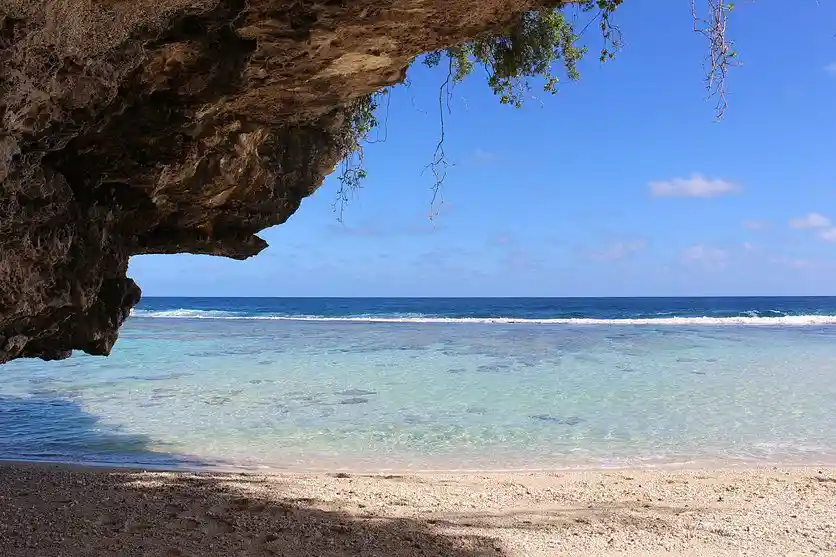
Rarotonga and Aitutaki might get all the love when people think of the Cook Islands, but Atiu is the one that quietly changes you. It’s older, wilder, more mysterious — like the Cook Islands’ untamed cousin that doesn’t care about being Instagrammable… and is all the better for it.
Atiu sits northeast of Rarotonga and has fewer than 500 residents. There’s no glitzy resort scene here. Instead, you get jungle-covered limestone terrain, deeply rooted Polynesian culture, and limestone caves that hold bones from ancient burials. And yes — that part is real.
The island isn’t big, but it’s rich in details. Like the bush beer houses (called tumunus) where locals gather to share fermented brews made from fruit, chat about village politics, and occasionally invite outsiders to join. Or the echoing Anatakitaki Cave, where you can spot rare Kopeka birds — a species that uses sonar to fly through darkness. Seriously. Sonar. It’s like nature got creative here.
Top things to do on Atiu:
- Explore Anatakitaki Cave and other limestone caverns
- Swim in secluded beaches with no footprints but yours
- Join a tumunu and sip bush beer with locals
- Visit the Makatea cliffs and spot tropical birds
- Buy crafts or tapu cloth directly from artisans
Best time to visit:
May to October offers cooler, drier weather and calm seas for snorkeling or cave exploration. Avoid cyclone season (typically November to April), especially if you’re planning any off-path hikes.
Pro Tip: Bring cash, sunscreen, and a real sense of curiosity. Flights from Rarotonga are limited, and the schedule can change. You’ll also want to book accommodation and tours in advance — this isn’t a show-up-and-figure-it-out place. Many travelers use Horizon Guides or download trip-building tools before arriving since Wi-Fi can be patchy.
Atiu is perfect if you’re chasing cultural immersion and care about supporting South Pacific Islands countries that are preserving their heritage. It’s not just a detour. It’s a different pace altogether.
Also… don’t skip the caves. Walking into one feels like stepping through time. And walking out? You might feel a little different, too. Calmer. Maybe even a bit lighter.
Explore more on 10 Shocking Myths About Yacht Vacations in Italy
🌊 12. Isla Cocos, Costa Rica (Oceania Connection: Pacific Marine Corridor)
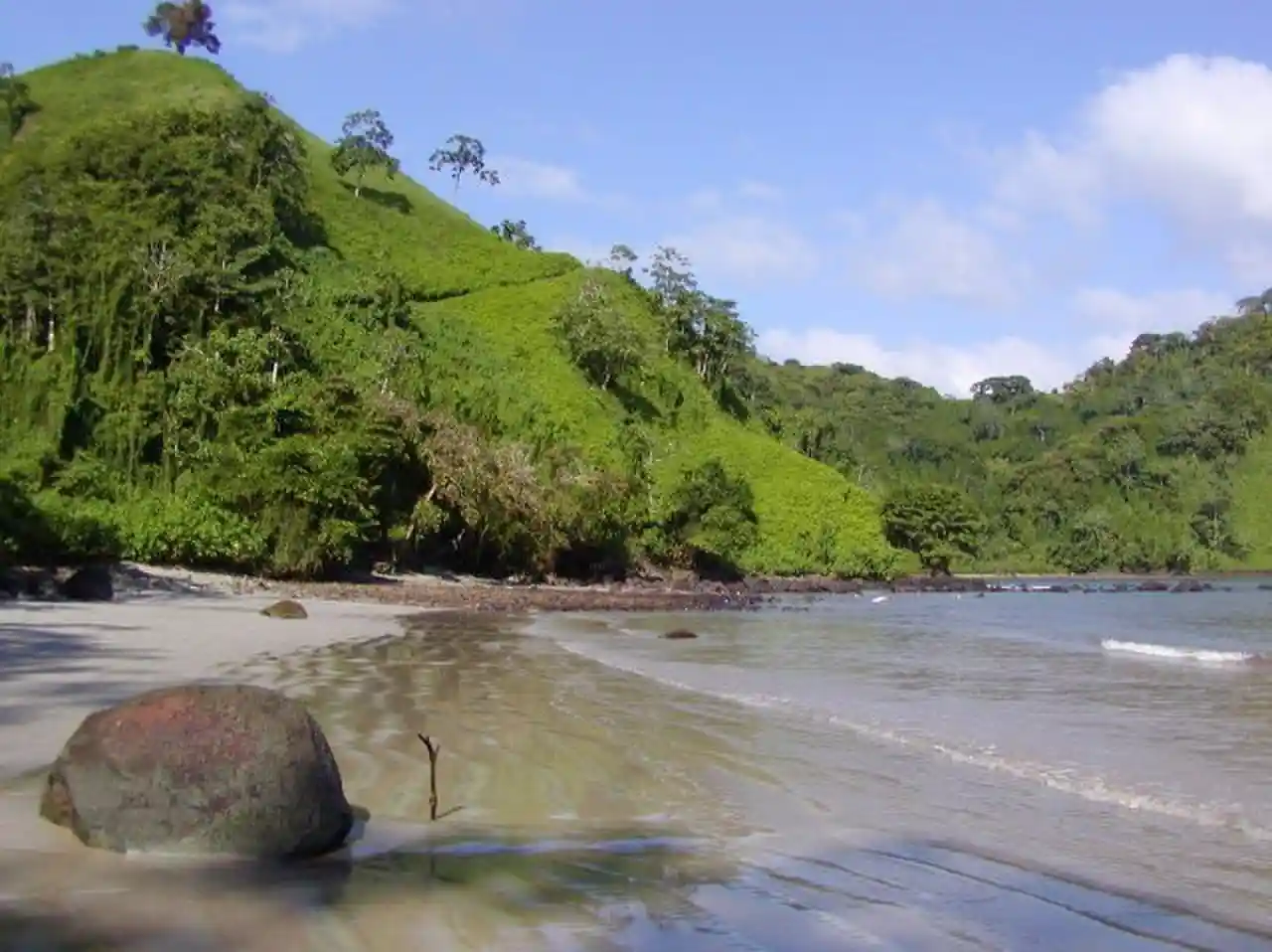
Okay, so technically Isla Cocos is part of Central America — it belongs to Costa Rica. But when you look at the way marine life migrates, especially across the Pacific Marine Corridor, Isla Cocos belongs to the same story as the coral reefs of French Polynesia and the humpback whale paths near the Cook Islands. It’s all connected. And Isla Cocos might just be the most jaw-dropping part of that marine web.
Isla Cocos is uninhabited by humans (aside from park rangers), protected as a national park, and accessible only by liveaboard boat. No day trips. No resorts. It sits around 550 km off Costa Rica’s Pacific coast, and getting there usually takes a 30–36 hour boat journey — just to reach the island.
So why do people go through all that trouble? One reason: hammerhead sharks.
But it’s not just them. Isla Cocos is one of the top scuba diving spots in the world, where you can see enormous schools of pelagic fish, rays, dolphins, and even whale sharks. It’s often described as a real-life Jurassic Park… except underwater. And fun fact? It actually inspired Cast Away and parts of Jurassic Park. That thick rainforest draped over sea cliffs? Yeah, it’s real.
Top things to do (all via dive expeditions):
- Scuba dive at famous spots like Alcyone and Dirty Rock
- Spot hammerhead sharks, manta rays, and turtles in the wild
- Explore deep-sea coral reefs in one of the most protected zones in the Pacific
- Trek short trails when you’re on land — but only with ranger supervision
Best time to visit:
June through November is best for big marine life, though rain is more common. December to May has better visibility. Most divers weigh the trade-off based on what they hope to see.
Pro Tip: This is bucket list stuff — and not just because of the marine life. It’s one of the most tightly regulated dive sites on Earth. Only licensed liveaboards with permits can bring visitors. You’ll want to book through operators recommended by the Best travel guide websites or respected resources like Lonely Planet or World Nomads.
Also, this isn’t beginner diving. You’ll need advanced certifications, strong swimming confidence, and an ability to live aboard a boat for over a week. If you’re into Gifts & Inspiration for ocean lovers or browse Epic Guides before every trip, this place might already be on your radar.
And if not… maybe now it is.
🌍 Planning a Trip to Oceania’s Hidden Gems
So… you’ve got the wanderlust, the list of remote islands, and maybe even a few pins on your South Pacific Islands map. But getting to these off-the-grid gems isn’t as easy as booking a weekend flight to Sydney or Queenstown. And that’s kind of the point.
Cradle Mountain-Lake St. Clair National Park stuns with alpine drama, but some of Oceania’s islands rival that wildness — just swapped with lava flows, sea cliffs, and floating cities of stone. Places like the Routeburn Track show just how vast and varied Oceania is — you can walk through Tolkien-like forests one week and snorkel through coral labyrinths the next.
If you’re the kind of traveler who gets a thrill from hiking the Milford Track in silence, there’s a good chance you’ll fall hard for places like Savo or Lake Lanoto’o — wild, moody, and humbling.
Here’s what you need to know before setting out to explore the best South Pacific islands to visit that rarely make the mainstream lists.
Transportation & Accessibility
These places aren’t just tucked away — they’re often downright hard to reach. And while that can be frustrating, it’s also what makes them special. That absence of mass tourism? It’s largely thanks to the logistics.
Expect:
- Flights that only run once or twice a week (if at all)
- Transfers via tiny airports, local ferries, or open-deck boats
- Long waits between connections, sometimes due to weather
- Limited or no public transportation on arrival
A lot of travelers rely on a mix of domestic airlines and small charter boats. And sometimes, you’ll need to call (yes, actually call) ahead to arrange pickup from a dock. If you’re using trip-building tools or Pocket Guides, always cross-check with the Department of Conservation or local tourism offices.
Packing & Travel Essentials
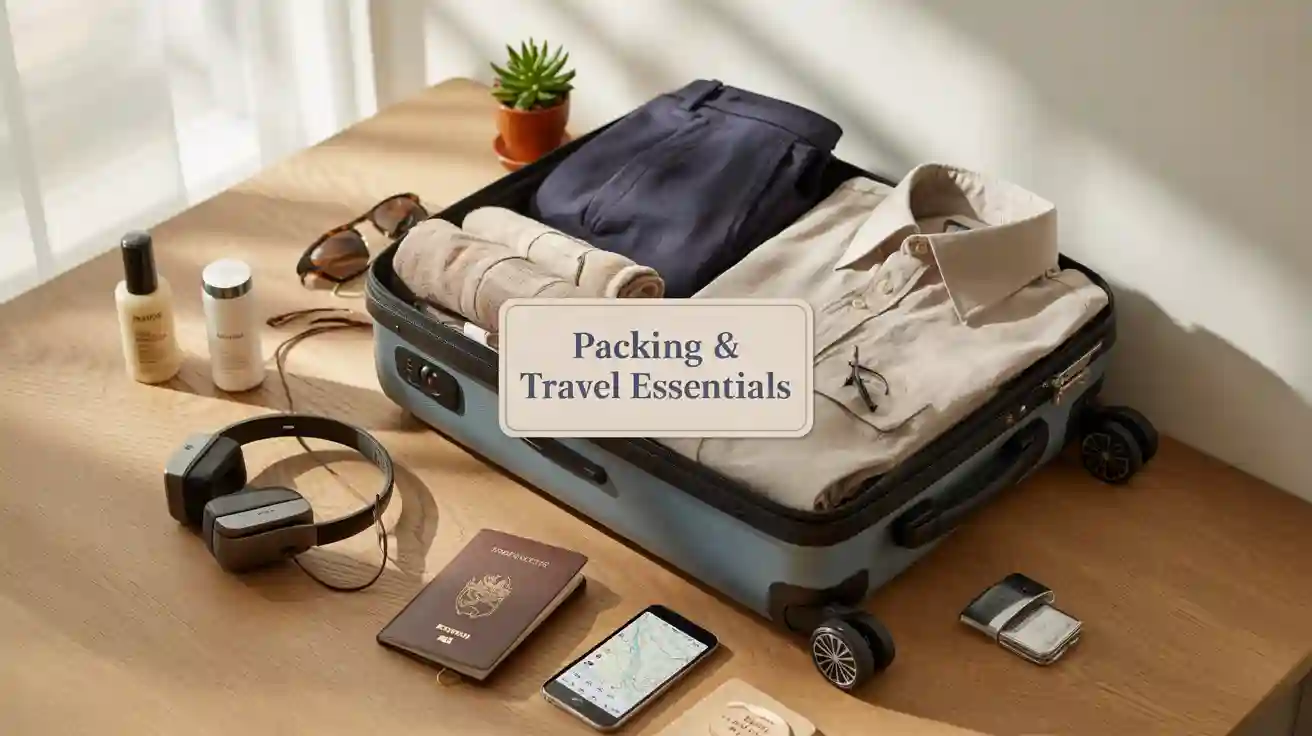
When you’re heading to places without supermarkets, pharmacies, or even working ATMs, packing well isn’t optional — it’s survival. Whether you’re hopping between the Rock Islands, Efate Island, or Niue Island, certain things should always be in your bag.
Check with Tourism Australia if you’re applying for a Working Holiday Visa — especially if you plan to visit remote parks or conservation zones like Cradle Mountain-Lake St. Clair National Park.
Must-Pack Essentials:
| Item | Why You Need It |
|---|---|
| Reef-safe sunscreen | Protect the coral reefs (and avoid fines in some areas) |
| Satellite phone or emergency contact device | No service zones are common |
| Water purifier or tablets | Fresh water isn’t always guaranteed |
| Cash (in local currency) | Card machines often don’t exist |
| Basic meds and first-aid kit | Nearest clinic might be hours away |
| Snorkel gear | Rentals can be scarce or nonexistent |
| Language essentials booklet | Especially handy in more traditional communities |
Optional but Smart:
- A dry bag for boat transfers
- Copies of your Working Holiday Visa or travel permits
- Offline country maps and cultural etiquette notes
Cultural Etiquette to Respect
If there’s one recurring theme across these hidden islands, it’s deep-rooted local culture — from Fa’a Samoa in American Samoa to the tapu cloth traditions in the Austral Islands. You’re not just visiting a place. You’re stepping into someone else’s rhythm.
If you’re hiking rugged tracks across Efate or even New Zealand’s Coromandel Peninsula, you’ll want lightweight layers and gear that can handle the unexpected.
Here’s how to do that respectfully.
Do:
- Learn basic greetings in the local dialect (it’s often a huge deal)
- Dress modestly in villages (even on hot days)
- Ask before taking photos of people or homes
- Bring a small gift when invited to someone’s home (tea, fabric, snacks)
Don’t:
- Assume tourism is always welcome
- Wander into sacred sites without a guide
- Compare places too loudly (“This is just like Fiji…” is rarely appreciated)
Pro Tip:
In many communities, Sundays are quiet, almost sacred. Shops close, music stops, and locals attend church or family gatherings. Respecting that rhythm goes a long way — and honestly, it’s kind of nice to slow down with them.
📸 Tips for Traveling Sustainably in Oceania
There’s something humbling about standing on a remote beach in the South Pacific — maybe somewhere near the coral reefs of Ningaloo Reef or at the edge of Freycinet National Park — and realizing you’re the only human around. It’s beautiful… and fragile. And how you travel matters more here than almost anywhere else.
Sustainable travel isn’t just a buzzword in Oceania. For many of these island communities, it’s the difference between thriving and disappearing.
Support Local Economies
In remote islands like the Mamanuca Islands or Uluveo in Vanuatu, tourism dollars can either uplift communities… or bypass them completely. The difference often comes down to where you stay, what you eat, and who you book with.
If you’ve ever wandered through McLaren Vale’s vineyards, you’ll recognize the slow-living, community-led vibe mirrored in places like Rotuma or the Maskelyne Islands — just swapped for breadfruit and reef fish.
How to keep your money local:
- Choose eco-lodges or family-run homestays instead of international chains
- Buy handmade crafts (like tapu cloth or wood carvings) directly from artisans
- Eat at local markets or roadside stalls — you’ll get better food anyway
- Book tours through community-run operators instead of global agencies
If you’re using Best travel guide websites or reading through Horizon Guides or Epic Guides, look for listings that emphasize community-led experiences.
Respect Marine Ecosystems
The Great Barrier Reef isn’t the only ecosystem at risk. From the coral walls around Micronesia FSM to the underwater tunnels off Niue Island, marine environments across the Pacific Islands are facing mounting stress — and a lot of it comes from tourism.
Western Australia’s Jurien Bay might be more known, but it shares the same underwater magic you’ll find echoing inside Tanna Island’s Blue Cave — where light and sea collide in eerie silence.
Just like Shark Bay’s protected zones in Western Australia, Isla Cocos is fiercely defended — both ecologically and logistically. And for good reason.
Basic reef respect:
- Whether you’re snorkeling near the Whitsunday Islands or free-diving off the coast of Tuvalu, one golden rule applies — never touch the coral.
- Use only reef-safe sunscreen (regular stuff is toxic to marine life)
- Never chase or touch marine animals like dolphins or turtles
- Don’t litter… obviously. But also don’t leave behind sunscreen wrappers, plastic bottles, or even food scraps
Better yet:
- Join a reef cleanup — many island communities hold them weekly
- Skip single-use plastics entirely (bring a refillable water bottle and utensils)
- Dive with eco-certified guides who follow marine conservation protocols
Pro Tip: You’ll see travel influencers swimming with dolphins or posing near turtles. But in places like the Hauraki Gulf or Hector’s Dolphins habitats, that kind of behavior can do real harm. Real sustainable travel sometimes means staying at a respectful distance — and letting wildlife stay wild.
📝 Conclusion: Dare to Go Beyond the Postcards
It’s easy to get swept up in the glossy travel brochures — the overwater bungalows, the infinity pools, the carefully edited sunsets. But the truth? The real magic in the South Pacific rarely shows up on a postcard.
Places like Ambrym Island or the limestone caves of Atiu don’t exist for tourists. They’ve been quietly thriving for centuries… breathing their own stories, shaped by volcanoes, tides, and cultural rhythms that move at their own pace.
And when you step into that — really lean into it — something shifts. You stop needing the perfect itinerary. You stop chasing the “best Pacific islands to visit” as ranked by popularity. You start traveling with intention.
This guide wasn’t about ticking boxes or booking the fanciest resort. It was about looking deeper. Finding the places where traditions like Fa’a Samoa still live, where the coral reefs haven’t been trampled by cruise ship crowds, and where a cave filled with golden koi or a sea mailbox might genuinely surprise you.
So whether you’re flipping through Travel Guide books or comparing country maps on your phone, don’t just stick to the usual. Go for the weird, the wild, the forgotten. Dive with hammerheads off Isla Cocos. Sip bush beer in a forest circle on Atiu. Get lost in the silence of Marovo Lagoon or the deep green of Fiordland National Park.
New Zealand may be famous for the Lord of the Rings landscapes, but venture beyond the film trails and you’ll find places like Golden Bay or the Routeburn Track that feel just as otherworldly — and far less crowded.
And sure, maybe you’ll miss a few tourist “must-sees.” But you’ll come home with something better — stories nobody else has, and a connection to the Pacific that feels a little more personal.
If you’re still wondering where to begin… maybe start with one of the places on this list. Or create your own route using some of the best travel guide websites and trip-building tools out there.
Whatever you do — just don’t let these hidden gems stay hidden forever.
💬 Frequently Asked Questions
1. Are these places safe for solo travelers?
Yeah, for the most part. Many islands like Niue Island or Rotuma are incredibly friendly and community-based. But “safe” here doesn’t mean modern hospitals or rapid emergency services. It means kind locals, quiet nights, and almost no crime. Still… always trust your gut and let someone know your plans, especially if you’re hiking caves or diving remote reefs.
2. How do I book accommodations on remote islands?
It’s rarely as easy as clicking “reserve.” You’ll often need to contact lodges directly by email (or even phone). The Best travel guide websites sometimes list small guesthouses, but honestly, word-of-mouth and local tourism boards are more helpful. Booking early is smart — options are limited and often run by families, not corporations.
3. What languages are spoken in the South Pacific Islands countries?
Depends on where you are. English is common in places like Fiji, Niue, and the Cook Islands. But in others — like parts of Vanuatu or French Polynesia — you’ll hear indigenous languages, French, or dialects like Fa’a Samoa. Bringing a few language essentials with you (or a guidebook) shows respect and helps more than you’d think.
4. Do I need vaccinations or permits?
Possibly. Some islands recommend vaccinations for hepatitis, typhoid, or even yellow fever depending on your travel history. Islands like Savo or Ambrym may also require local permits if you’re visiting sacred sites or volcano zones. Check with World Nomads or your home country’s travel advisory sites.
5. Is island hopping between these places realistic?
Yes… and no. Some islands are close together — like the Maskelyne Islands and Efate Island — and have decent boat connections. Others, like Isla Cocos or Marovo Lagoon, are so isolated you’ll need to plan separate trips. A South Pacific Islands map helps, but don’t assume you can just bounce between them easily.
6. What’s the cheapest Pacific island to visit?
Places like Samoa or parts of Vanuatu are generally more budget-friendly than touristy spots like Bora Bora or Lord Howe Island. That said, even “cheap” islands can get expensive fast if you’re not careful with logistics. Off-season flights help. So does traveling slow and local.
7. What’s the weather like on these hidden islands?
It varies, but one word you’ll hear a lot: cyclone. The cyclone season typically runs from November to April. Outside of that, most islands have warm days, cooler nights, and seasonal rains. Always double-check before traveling, especially to places like the Solomon Islands or Austral Islands.
8. Can I work while traveling in Oceania?
If you’re planning on staying a while, check if you’re eligible for a Working Holiday Visa — especially for places like New Zealand or Australia. For the smaller islands, remote work is tricky. Wi-Fi can be slow or nonexistent in areas like Uluveo or Nan Madol.
9. What’s the best travel guide resource for these lesser-known islands?
Lonely Planet is solid for general overviews. But for hidden gems? You’ll want Epic Guides, Horizon Guides, or even small blogs run by long-term travelers. Also, don’t ignore local Department of Conservation websites — they’re full of maps, access notes, and cultural etiquette tips.
10. What should I absolutely not do while visiting these places?
Avoid acting like the island is a theme park. That means no climbing moai statues on Rapa Nui, no wandering sacred caves without permission, and definitely no removing coral or shells. Respect comes first. Always. These are not just destinations — they’re someone’s home.
11. How to get to Uluveo the Birdsville Track?
Getting to Uluveo isn’t quite the Birdsville Track… but it might test your patience in similar ways. Think ferry delays, bumpy roads, and patchy schedules.
Recent Posts
 LAMOTH Museum: Hidden Gem in LA for Travelers & History Fans
LAMOTH Museum: Hidden Gem in LA for Travelers & History Fans 10 Reasons to Read the www.travellingApples.com Blog
10 Reasons to Read the www.travellingApples.com Blog Hidden Appalachian Mountains Folklore: Legendary Myths Every Traveler Should Walk
Hidden Appalachian Mountains Folklore: Legendary Myths Every Traveler Should Walk 7 Mexico City Museums You’ve Never Heard Of (But Must See in 2025)
7 Mexico City Museums You’ve Never Heard Of (But Must See in 2025) Haunted Mansion Disneyland: 9 Secrets Every Visitor Must Know (2025)
Haunted Mansion Disneyland: 9 Secrets Every Visitor Must Know (2025)

